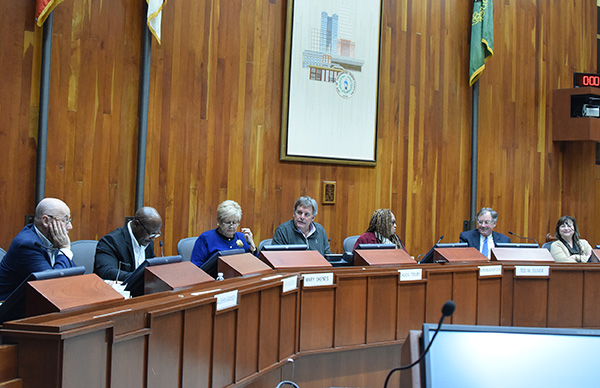Every Greensboro City Councilmember should attend one meeting of the Greensboro Board of Adjustment, so they can see what effect the current zoning ordinances have on the citizens of Greensboro.
The good news is that both the Board of Adjustment and the city staff appear to realize how outdated some of the zoning ordinances are. The Board of Adjustment regularly grants variances to allow homeowners to make improvements to their property that would be routine except that their property is in violation of one or more of the various zoning ordinances often one of the many setback requirements.
Unless they have had to pull a building permit recently most people have no reason to know whether their house is out of compliance or not and judging from recent Board of Adjustment meetings a lot of the houses in older neighborhoods are out of compliance with the current ordinance. Of course there is no reason to think that homes built before the Zoning Ordinance passed in 2010 would be in compliance with an ordinance that exist at the time the home was built.
A homeowner who wants to turn their carport into a garage, finds that the carport doesn’t meet the current setbacks. A homeowners who wants to enclose a deck, discovers the improvement won’t meet the current setback. Then these people find themselves in the City Council Chambers in front of the Board of Adjustment requesting a variance for something that seemed like a simple home improvement to them.
If the City Council made relatively few changes to the zoning ordinance it could eliminate many of the requests for variances that come before the Board of Adjustment, a point Board of Adjustment members make at meetings with some frequency. The city staff is, of course, caught in the middle. It is their job to enforce the ordinance and require variances when the situation warrants it whether they think making homeowners jump through a bunch of hoops makes sense or not.
The City Council did provide some relief modifying the front setback requirements for single family homes, after many requests from the Board of Adjustment. The problems were created because the front set back for single family homes is not a set distance such as 25 feet as it was in many residential zoning districts in the past. Under the current ordinance the front setback, how far a house has to be from the street, it is based on the average setback of the two houses on either side of the subject house. So it’s not something you can figure out without a lot of measuring and even the city has been known to get it wrong the first go round.
Another ordinance, that results in frequent variances being granted, does not allow two electric meters on a single family lot. This means that an accessory building, unless a variance is granted, must be provided with electricity from the principle building on the lot.
This ordinance was reportedly designed to discourage, so called “granny flats,” a separate dwelling on the same lot. The city now says it is encouraging greater density and granny flats are one method of doing that. The Planning Department is looking into amending the ordinance, but the City Council seems oblivious to the issue.
The fee to apply for a variance is $400 and that simply gives homeowners the right to appear before the Board of Adjustment and plead their case. Considering the staff time involved in preparing for a variance, it is not an unreasonable fee.
But for the home owner applying for a variance costs both time and money. The homeowner cannot get a building permit until the decision is made on the variance which takes about a month.

